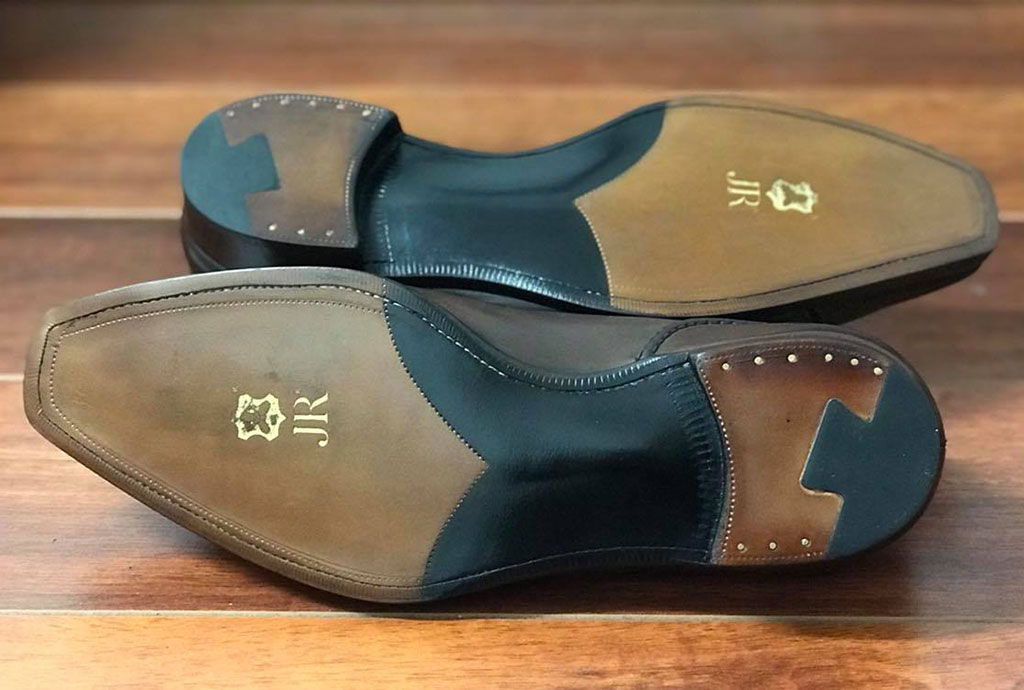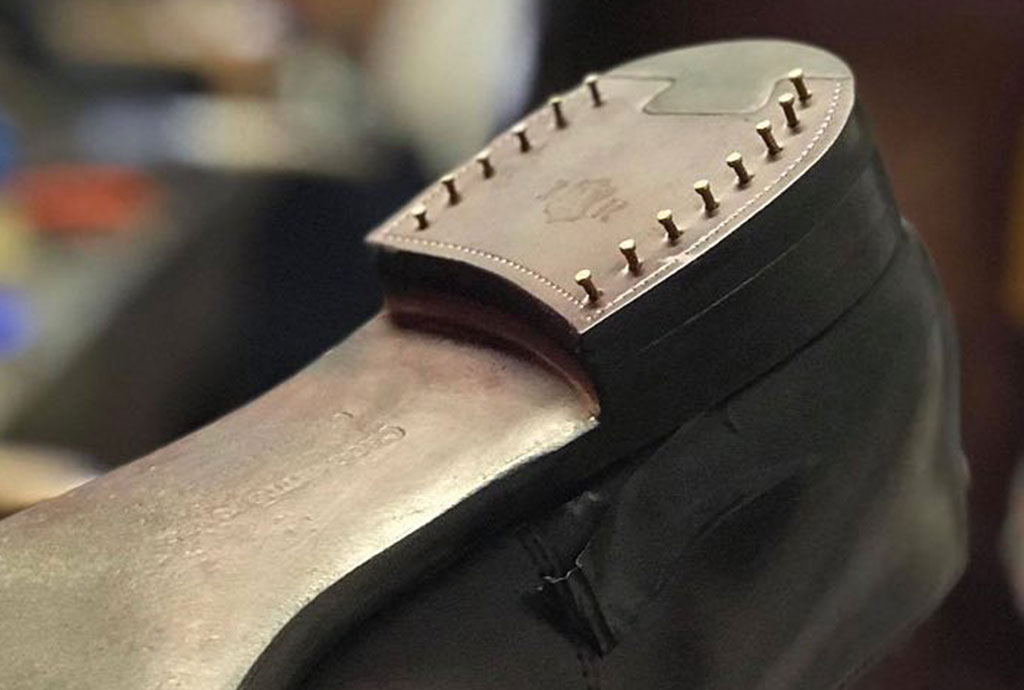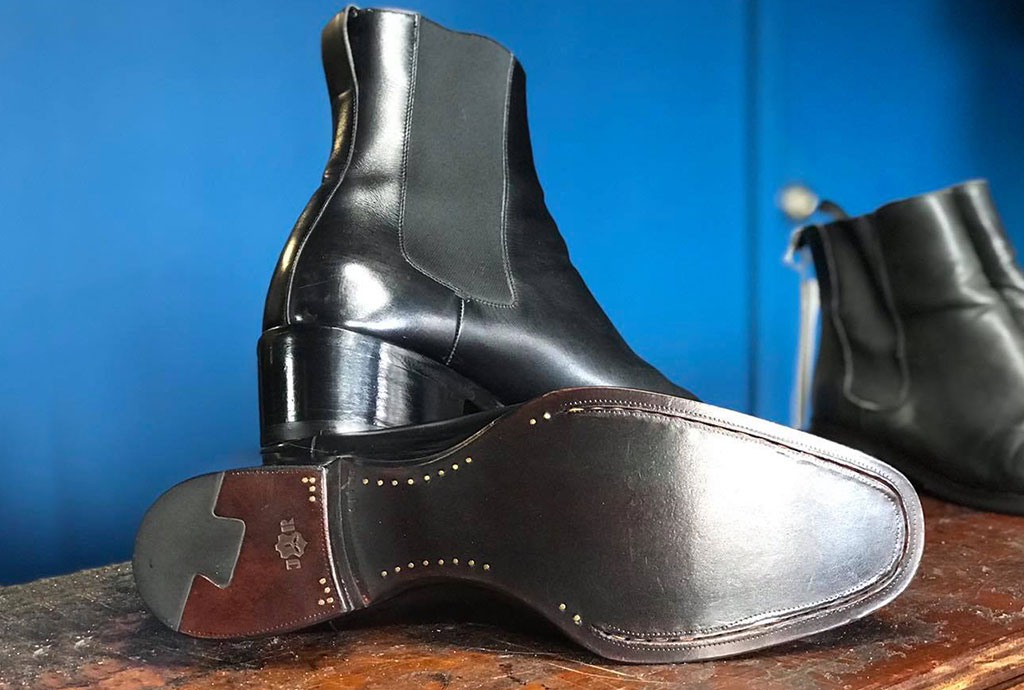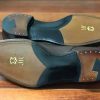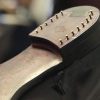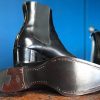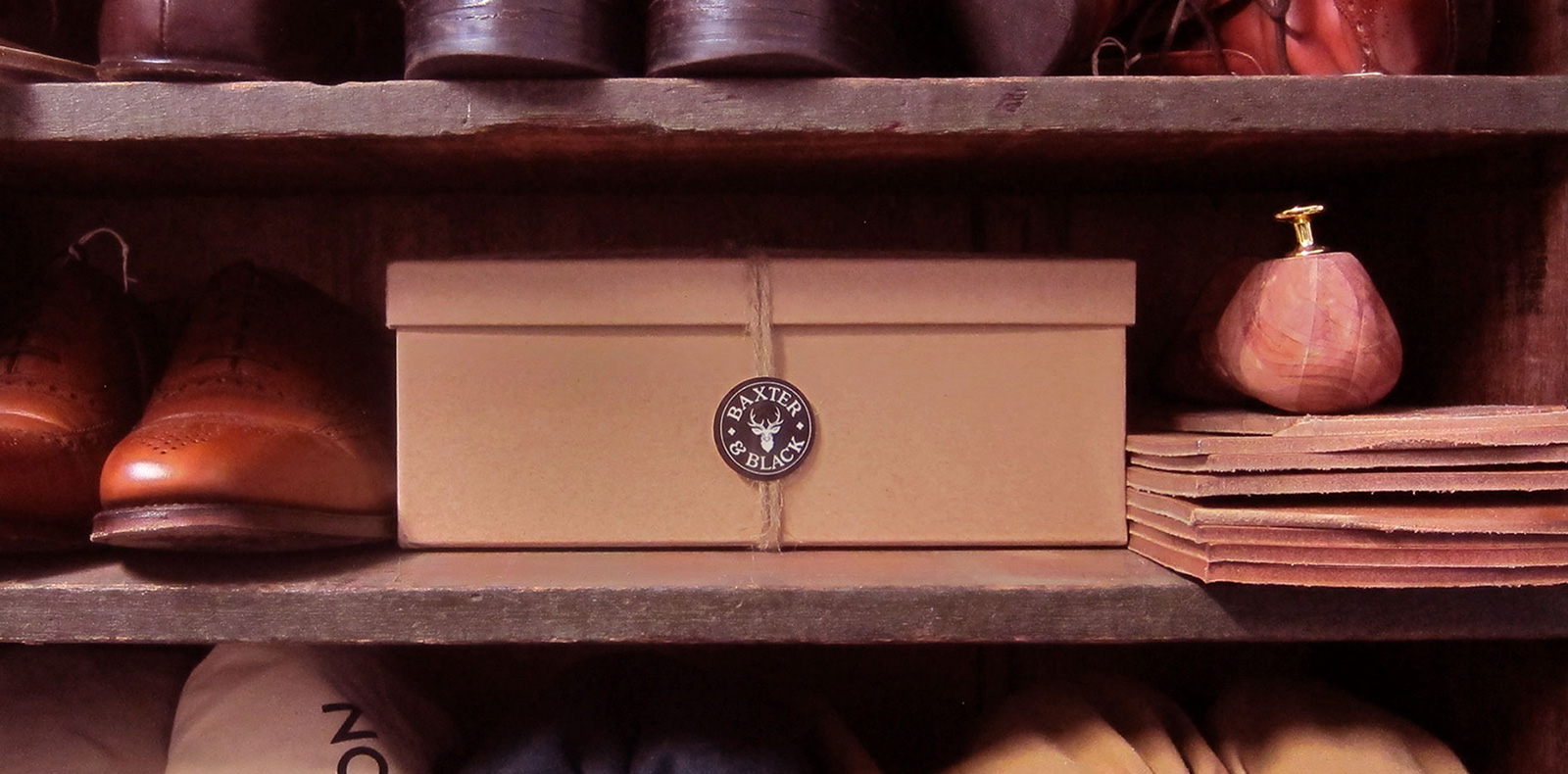We use decorative brass nails and tacks because they resist rust and don’t rot out leather that is exposed to water. Our two major suppliers of brass nails and tacks are French and Slovenian.
Our French partners first started producing shoemaking tacks in the nail factory Rivierre in 1888. At that time, Theodore Rivierre used a revolutionary new method, using wire instead of a sheet of metal. Today, with the original XIXth century machines, we keep producing those tacks, known all over the world for their quality. In addition, we source our Marteau shoe hammers from their factory.
From Slovenia, we use a large variety of tacks and nails. We use their lost head nails to do decorative work on the soles of shoes and on the JR dovetail heels.
Their square shank tacks, we use to provide decoration and securing rubber sole overlays.
The Process
- When doing decorative nails on the JR heel we use our leather compass to mark out the distance from the edge of the heel and then the distance between each nail.
- We use our scratch awl to mark the holes where we will place the nails and hammer in the nails most of the way in. We then clip the heads of the nails and gently sand the nails down flush to the surface of heel.
- With some fine sanding, the surface is then clean and the nails flush. We then polish the leather surface with Saphir crème and seal. Decorative markings can be applied to the heel using an indent wheel.
The technical stuff
Cobbler’s tip…
Brass has excellent properties for shoemaking. Because it is softer than steel it can bend and clinch in leather without creating problems with comfort.







